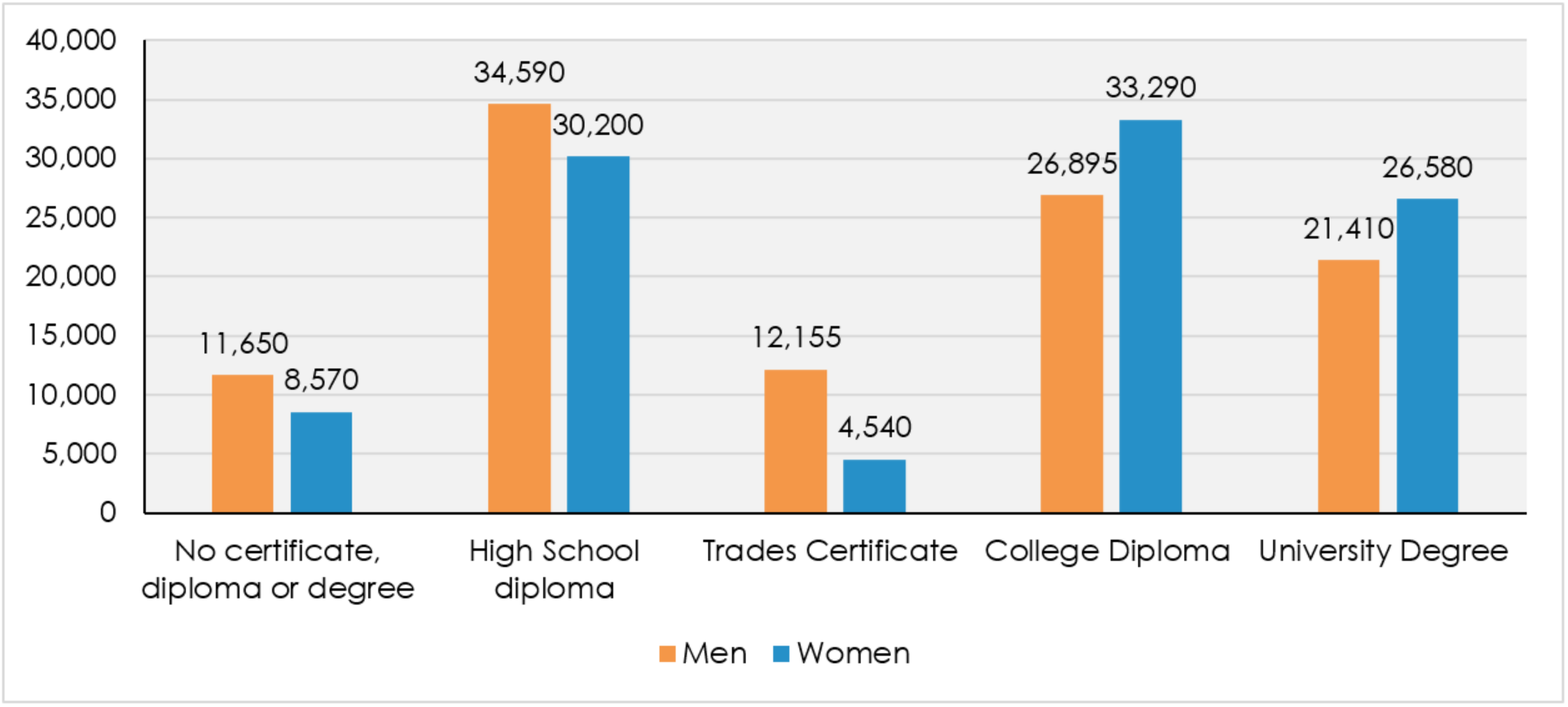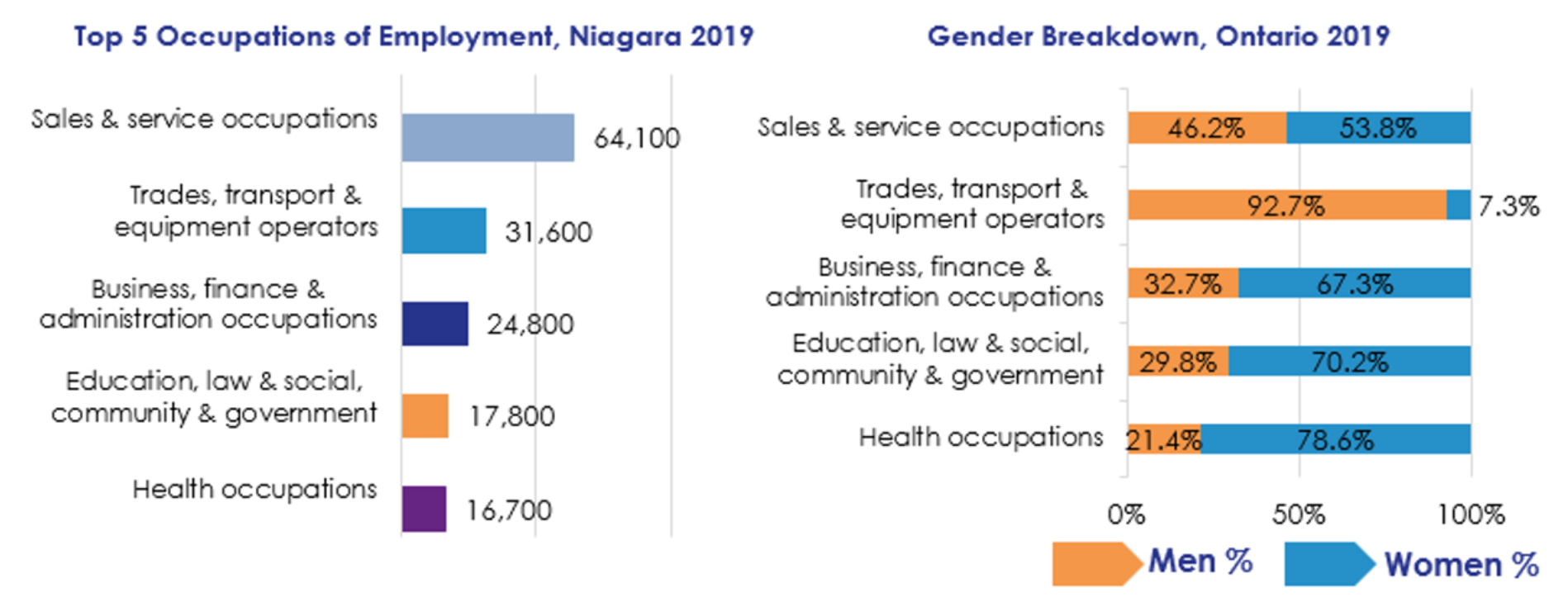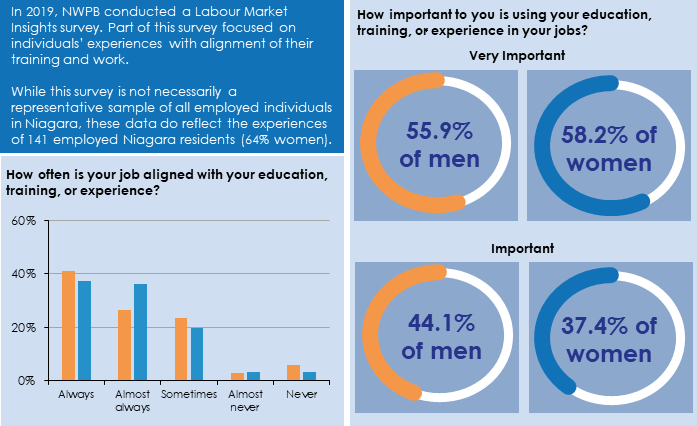One of NWPB’s current projects is to produce a gender-focused Labour Market Report. Given national and provincial employment trends, this report will offer a deeper understanding of the gendered impacts of COVID-19 on employment in Niagara. This project also offers context for those working towards gender and employment equity, and also aligns with the current priorities of Niagara’s Regional government.
To supplement our complete report, NWPB is publishing a series of blogs outlining gender-focused labour market information. The previous post in this series outlined local population data, key labour market indicators, and employment insights. This post focuses on the level of education and major field of study for the local labour force.
Workforce Education and Fields of Expertise
Data from the 2016 census show that Niagara’s employed labour force is highly educated. Figure 1 outlines the highest level of education for employed individuals in Niagara, and the distribution of men and women within these education categories.
Figure 1: Highest level of education, Employed individuals living in Niagara, 2016

Census data also outline individuals’ field of study. The top 3 areas of study for individuals aged 15 years and older in Niagara are:
- Architecture, engineering, and related technologies (40,110 people)
- Business, management and public administration (35,290 people)
- Health and related fields (31,735 people)
Figure 2 outlines the percentage of men and women with postsecondary education credentials in these three top fields of study.
Figure 2. Major field of study, Men and women 15 years and older, Niagara, 2016

Occupation of Employment
Figure 3 outlines the top areas of employment in Niagara throughout 2019. As current gender data on occupation of employment are not available for Niagara, Figure 3 shows that, in Ontario, more men than women report employment in trades occupations. More women than men report employment in business and finances jobs and in healthcare-related employment which is consistent with the field of study data presented in Figure 2.
Figure 3. Occupation Data

Workforce Insights
When we consider insights from the local labour force, most respondents to our 2019 Labour Market Insights survey said that their job always or almost always aligned with their education/training/experience. Though not a representative sample of the local workforce, these data do indicate that some individuals feel that their experience and occupation align well.

Overall these data outline the educational background of men and women in Niagara’s labour force. Generally, these data indicate that the workforce is highly skilled and does have educational backgrounds in fields that are top areas of Niagara’s employment landscape.
These data also show fairly stark gender differences in the number of individuals with a trades or apprenticeship certificate and in fields of study such as architecture, engineering, and related technologies and health related fields. These trends tend to be reflected in occupation of employment.
A full infographic of the above data can be downloaded here for your convenience.
Would you like to know more? NWPB is ready for your questions. Please reach out to NWPB’s CEO, Vivian Kinnaird at vivian@nwpb.ca